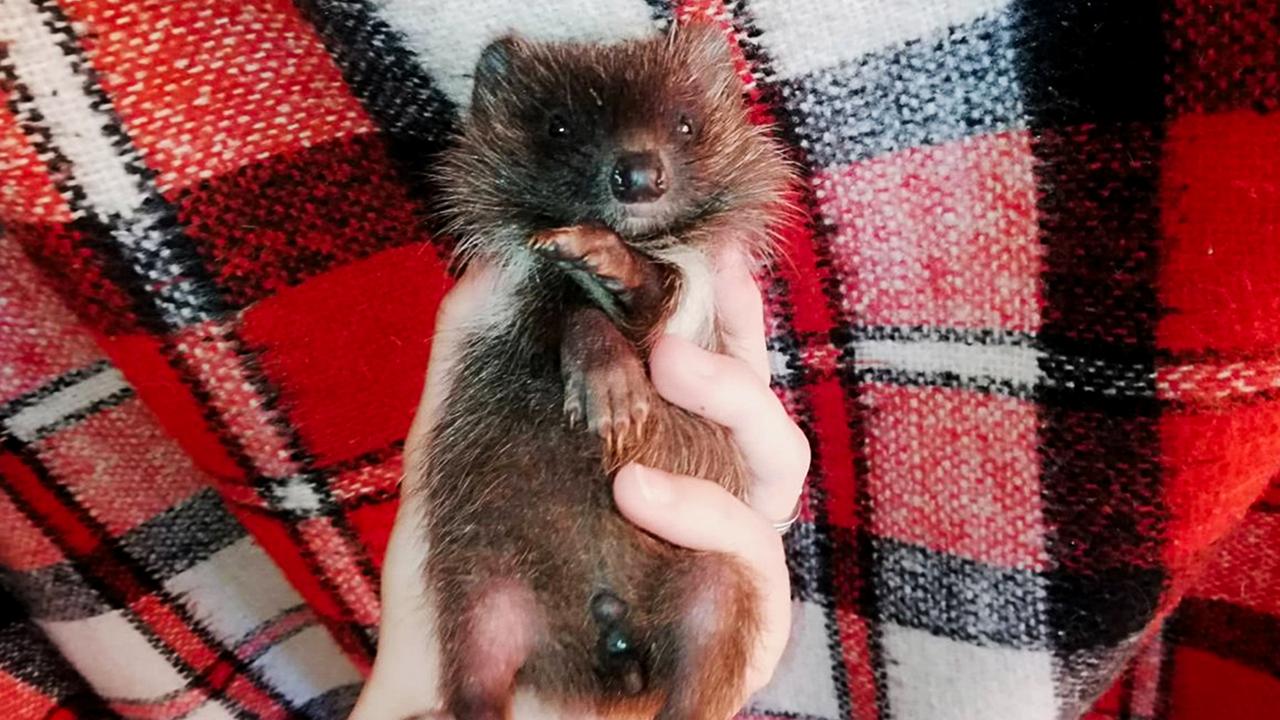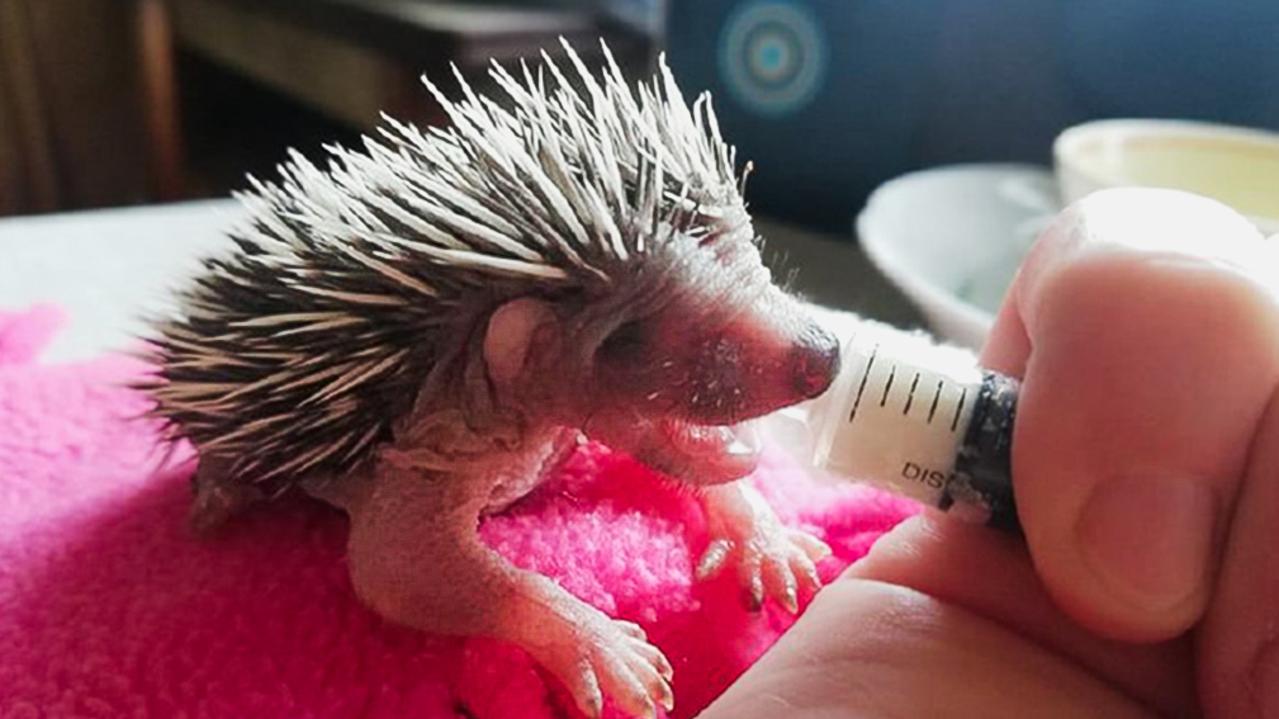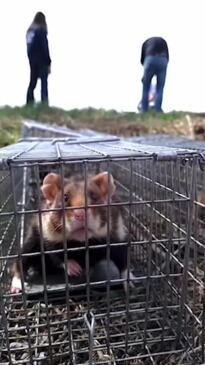Heroic rescuers help save hedgehogs and hamsters in Ukraine war zone
Saving animals in a war zone is dangerous work for the humans who stay to rescue them. Learning about the teams healing and releasing hedgehogs and hamsters back into the wild

READING LEVEL: GREEN
Putting your own life on the line to save injured or lost hedgehogs and hamsters in the middle of a war zone is brave stuff.
Imagine when enemy aircraft are dropping bombs from the sky, you not only have to get yourself to a bomb shelter but also armfuls of baby hedgehogs that need feeding. And if the power goes out, you need to ensure the heating mats for the aged or sick hedgehogs still work. This is on top of the struggles of finding food, hay and medical supplies.
This is the reality for managers Kyrylo Taler and his partner Hanna-Solomiya Urahan at the First Private Hedgehogery in Kyiv, Ukraine. It is a small, private group that is supported by the International Fund for Animal Welfare (IFAW).
“Some hedgehogs are very friendly with humans. They become affectionate, like cats. They can even sleep in a human’s arms,” Mr Taler told the Rubryka news site recently. “But there are also those who miss nature. You can see from them that they want to be free, to run on the grass,” he said.

The IFAW has supported the hedgehogery to buy supplies and equipment including crates, electric batteries in case of power outages, a washing machine for reusable towels, boxes for storing animal food and other vital supplies.
Many of their rescued hedgehogs have been released safely, including some sent to Poland.
“It is so great to know that our animals, whom we treated and took care of, are seen around cottages or in villages one or two years later – some also walking with their cubs. This means they were able to successfully continue their life in the wild, which is amazing!” Mr Taler said.
European hamsters have also needed help to survive.
The wild hamster population is declining quickly across Europe due to farming, habitat* loss and people trapping them for their fur.

Usually, hamsters would be released into historical ranges to support wild populations but the war has reduced the amount of potential release sites and the ability to monitor the animals.
Since 2023, the Breeding and Reintroduction Centre of Protected Species at Kyiv Zoo in Ukraine has been catching hamsters to release them either directly into the wild elsewhere or include them in their conservation* breeding program.

WHY IS THE WAR HAPPENING?
Ukraine and Russia have a long and complex* history. In the 1700s, the land that we now know as Ukraine was once part of the Russian Empire and later the Soviet Union, which Russia controlled.
In 1991, Ukraine gained its independence* from the Soviet Union, but many people in Russia believed Ukraine should still be part of their country.
Since 2014 there have been tensions between Ukraine and Russia, which broke out into war in February 2022 when Russian President Vladamir Putin sent troops into Ukraine in an attempt to take back control.
The situation in Ukraine remains grim* with many citizens living in damaged buildings without electricity, water, or heat. Access to food, healthcare, education, and protection remains a daily struggle for most people.
With more than six million fleeing Ukraine and millions more not able to live in their homes within the country, this has become one of the largest and fastest-growing displacement* crises* in the world today. It is also one of the bloodiest wars in Europe since the Second World War.

GLOSSARY
- habitat: the natural home or environment of an animal or plant
- conservation: careful preservation or protection of something
- complex: complicated with many different parts
- independence: freedom from outside control
- grim: very serious or gloomy
- displacement: when something is moved from its place or home
- crises: times of intense difficulty or danger
EXTRA READING
Ukraine kids’ ‘new normal’ of war
Zelensky named Person of the Year 2022
Banksy mural in bombed Ukraine
QUICK QUIZ
1. What is the name of the shelter that rescues hedgehogs?
2. What does IFAW stand for?
3. How are hedgehogs similar to cats?
4. When did Russia invade independent Ukraine?
5. What challenges are Ukraine people facing?
LISTEN TO THIS STORY
CLASSROOM ACTIVITIES
1. Hedgehogs and hamsters over humans?
What do you think drives Kyrylo Tiler and Hanna-Solomiya Urahan to save these hedgehogs and hamsters with such care and affection, when it’s such a fight for survival, even for humans, over in Ukraine at this time? Write some possible reasons below:
—
—
—
Why is it important that the International Fund for Animal Welfare (IFAW) supports organisations such as this hedgehoggery in places like Ukraine at this time?
Time: allow 20 minutes to complete this activity
Curriculum Links: English, Science, Personal and Social, Critical and Creative Thinking
2. Extension
Since the most recent war in Ukraine started in 2022, millions of their citizens have been displaced without a place to live or access to basic human necessities such as food, safety, warmth, and education.
When the war is finally over, hopefully soon, what should be the Government’s first steps to help the people of Ukraine?
Time: allow 10 minutes to complete this activity
Curriculum Links: English, Personal and Social, Critical and Creative Thinking
VCOP ACTIVITY
Up-level it
Scan through the article and see if you can locate three words that you consider to be basic, or low level. These are words we use all the time and that can be replaced by more sophisticated words. Words like “good” and “said” are examples of overused words.
Once you have found them, see if you can up-level them. Think of synonyms you could use instead of these basic words, but make sure they still fit into the context of the article.
Re-read the article with your new words. Did it make it better? Why/why not?

